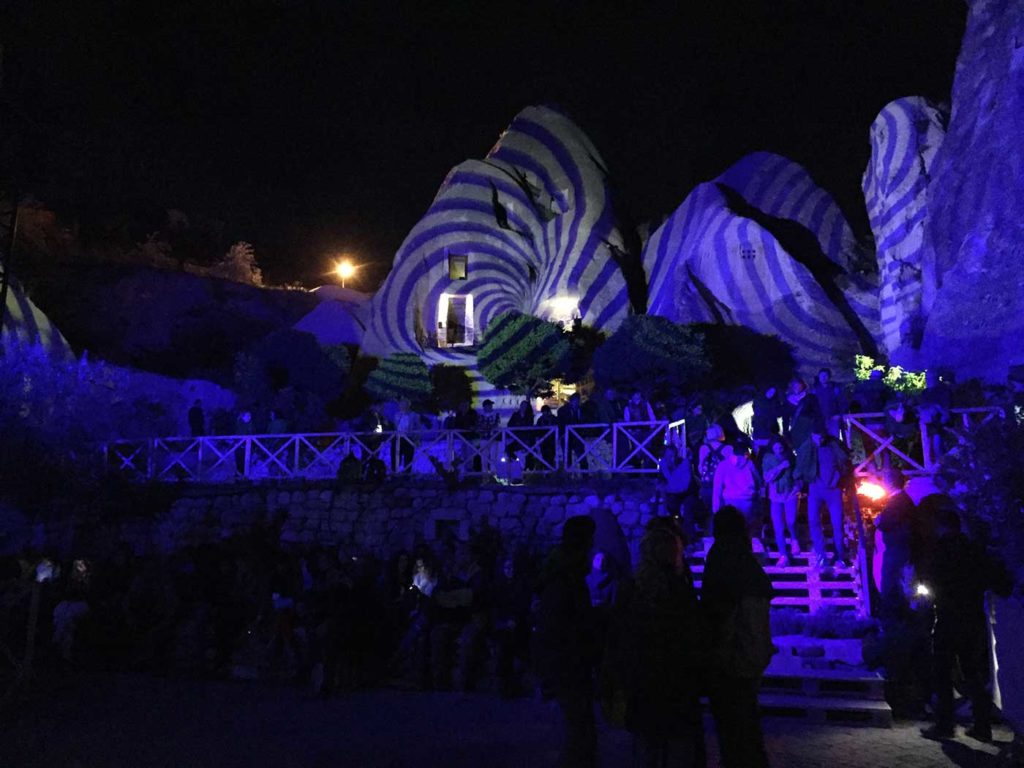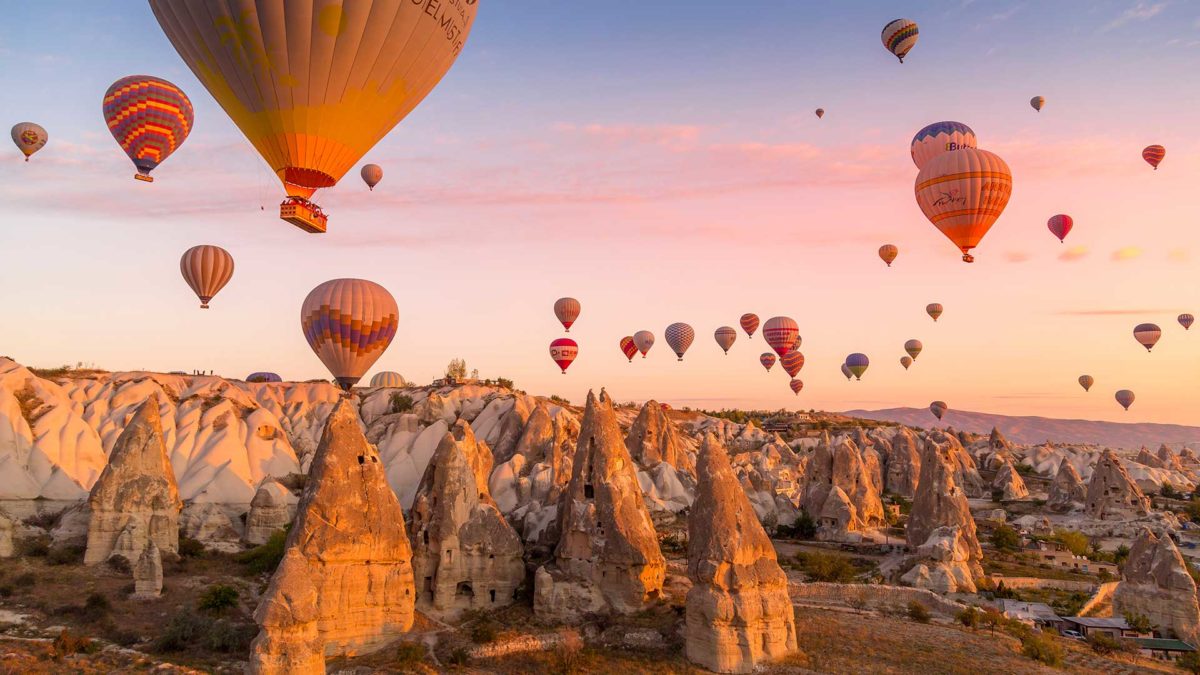
Sziget Festival 2016, Budapest, Hungary
5th November 2020
Prawn with Curry Sauce
22nd November 2020Dancing between the fairy chimneys of Cappadocia
Dancing between the fairy chimneys of Cappadocia
Cappadox Festival is a magical experience in its own right, and the perfect way to explore the fairy chimneys of the beautiful, mysterious region of Cappadocia in Turkey.
My homeland, Turkey, is a pretty special place. Thousands of years of fascinating history flow into the present, creating an amazing atmosphere almost everywhere you go. Across the country, there are remarkable sights to see, both manmade and natural.
One of the most famous, and most atmospheric of these special sights has to be the fairy chimneys of Cappadocia, where humanity and nature combine to form a truly amazing place.
In Turkish, this region is called Kapadokya, taking its original name from the ancient Persians, who called this magical place Katpa Tuka, or the Land of Beautiful Horses. However according to the Luvi (the oldest natives of Anatolia), Cappadocia really means The Land Below.
If you are a keen traveller, you will likely recognise the stunning natural formations of Cappadocia’s UNESCO World Heritage-listed nature reserve. Formed millions of years ago by the lava and ash of Erciyes, Mount Hasan, and Güllüdağ, the landscape has been manipulated by erosion from wind and rain for eons, resulting in the extraordinary chimney rock formations we see today.
Sedimentary rocks formed in lakes and streams and ignimbrite deposits that erupted from ancient volcanoes millions of years ago, during the late Miocene to Plioceneepochs, underlie the Cappadocia region. The rocks of Cappadocia near Göreme eroded into hundreds of spectacular pillars and minaret-like forms. This formation continues today too.
These towering chimneys make the region one of Turkey’s most cherished natural wonders, and one of the country’s most popular tourist spots.
The fact that humans have lived in such a harsh, unforgiving, bleak landscape since the Paleolithic period is a testament to the power of human will and ingenuity.
Of course, Cappadocia is much much more than just the spectacular fairy chimneys. The region extends from the Black Sea in the north, to the foothills of the Taurus Mountains on the Mediterranean in the south. There are plenty of excellent places to visit throughout the region, with some of the most popular listed below.
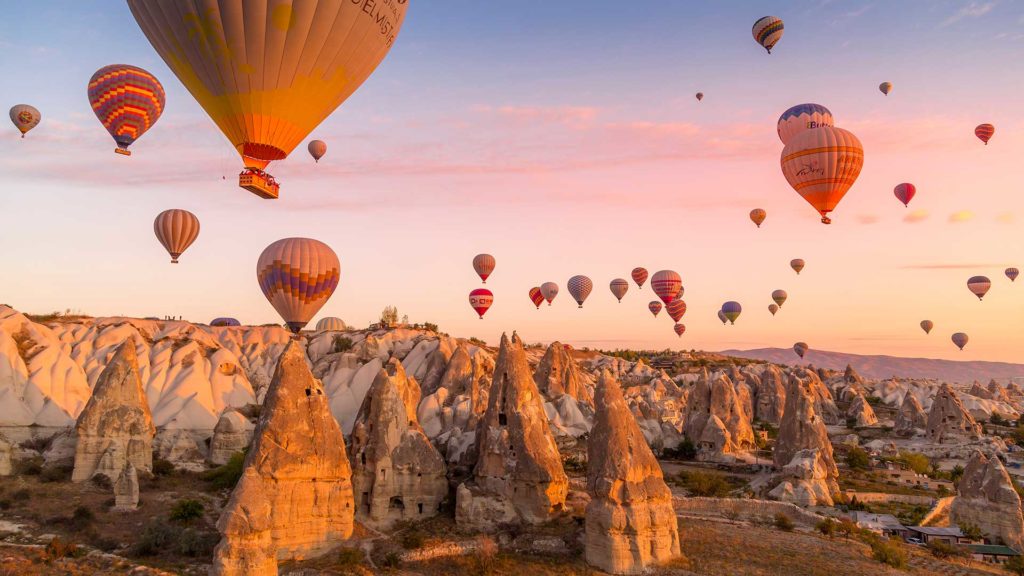
Göreme
One of the most significant places in the world for the early history of Christianity. Here, early Christian worshippers came here to avoid persecution by the Romans, and carved churches and hiding places directly into the rock of the landscape. In the 4th century when Christianity became legal in most parts of the Roman Empire, Christians came together under the leadership of St Basil, St Gregory of Nyssa, and St Gregory of Nazanius, and developed the concept of monasteries. The first monasteries were built here (again, carved from the rock of the surrounding region), and they make this a remarkable place to visit.
- Göreme Valley
Ringed by the towns of Nevşehir, Ürgüp and Avanos, Göreme Valley is decorated with beautiful stone carvings, chapels and monasteries hewn from the rocky landscape, and the largest and tallest of the region’s amazing conical fairy chimneys. Göreme contains many deep valleys, dovecotes, churches, and panoramic terraces that offer views of beautiful landscapes and glorious sunsets
- Göreme Open Air Museum
The Göreme Open Air Museum is the best place to visit to get the full experience of the region in just one place. The Museum includes scores of refectory monasteries side-by-side, each with its own stunning church. It is situated right at the centre of the region, and boasts the best and most well-preserved churches, frescoes, and other rock architecture.

- Pigeon Valley
Indigenous pigeons have been an incredibly important part of life in Göreme for centuries. Pigeons roosted in the valleys, and their droppings were used as fertiliser for crops, as well as for plaster for church frescoes. They were also bred for their meat as well. Pigeon Valley stretches from Üçhisar to Göreme, and is a popular hiking trail complete with a stream and a waterfall.

- Love Valley
You might think that this name implies an atmosphere of romance, perhaps with heart-shaped rock formations or particularly beautiful sunsets…but the reality is rather cruder. This valley is full of rock chimneys that look quite remarkably phallic…but despite the slightly rude backdrop it is still a popular place for marriage proposals!
- Zemi Valley
Zemi Valley is unusual in Cappadocia, as it differs from the usual bleak, rocky landscapes, and boasts many green spaces and lush, verdant valleys.
- Camel Rock
A rock that looks like a camel. What more is there to say!
- El Nazar Church
One of Cappadocia’s most iconic cave churches, El Nazar is carved into a lonely fairy chimney standing apart from its neighbours, making it a beautiful prospect to visit. The church was a later addition to the region than many of the others, carved in the 900s as part of a Byzantine expansion period.
Uçhisar
- Uçhisar Castle
One of the highest points in Üçhisar, the castle started life as a Roman tomb, but was gradually fortified as the Silk Road trading route became more important, with tunnels carved and layers added to turn it into an important castle for the Eastern Roman Empire.
- Bezirhane
Bezirhane in Uçhisar has had a fascinating history. Originally a destination for anchorites over 1500 years ago, it grew with the Silk Road to become a caravanserai for camel trains on their way to and from the East. Until a century ago it was the centre of the Ottoman linseed oil industry. It is most famous today for its mind-blowing acoustics and unique naturally-formed textures.
- Tığraz Castle
The second highest castle in Uçhisar, Tığraz is a pretty stunning sight, and offers unbeatable views across the whole region.
- KocabağWinery
A family winery with a twist, Kocabağ is carved out of the rock in the same way as the monasteries, and the wine is fermented in tanks carved from the same rock! An amazing way to literally taste the region.
Avanos
Avanos, formerly known as Vannessa, is one of the largest districts in Nevşehir. The longest river in Turkey, Kızılırmak, passes through the town, and it is named after the red mud that forms the river’s bottom. Locals have used this mud for centuries to make pottery and religious artifacts, since the area was ruled by the Hittites. The same techniques are still used today in the many pottery workshops in town.
- Avanos Valley
Dissected by the Kızılırmak River, Avanos is one of the most spectacular places in Cappadocia. The area looks as if it has been deliberately decorated with fairy chimneys. It also harbours valleys with fascinating sceneries, and frescos and churches carved into the rocks.
- Paşabağ Monks Valley
Paşabağ Valley is one of the best sites for exploring the fairy chimneys. The valley is also known as Monks or Priests Valley. The Bozbağ mountain looking down towards the Paşabağ Valley is another splendid site for a 360-degree view of the Cappadocia landscape.
- Devrent Valley
Popularly known as the Imaginary Valley, the rock formations in Devrent Valley are said to resemble animal shapes, which makes it one of the most popular destinations in Cappadocia.

- Zelve Valley
Another open air museum, Zelve was a monastic retreat from the 9th to the 13th centuries. In more recent times, Turks and Greeks lived side by side in this community until the Treaty of Lausanne required Greeks to return to their homeland. These days the Valley and its cave homes form a wonderful UNESCO World Heritage site.
- Çavuşin Village
Çavuşin is an old Greek village including the 5th century church of Saint John the Baptist.
- Saruhan Caravanserai
This was the last Caravanserai to be built in the area, in 1259. It is a grand, elaborate affair with a distinctive style, and emphasises the importance of the Silk Road trade route for Turkey throughout history.
A beautifully designed museum showcasing the pottery and artisan crafts of the region.
Ürgüp
- Ortahisar Castle
A 90m high natural fortress, Ortahisar Castle towers over the town below, offering a a magnificent panorama over the fairy chimneys of Hallacdere and the snowy peak of Mt. Erciyes.
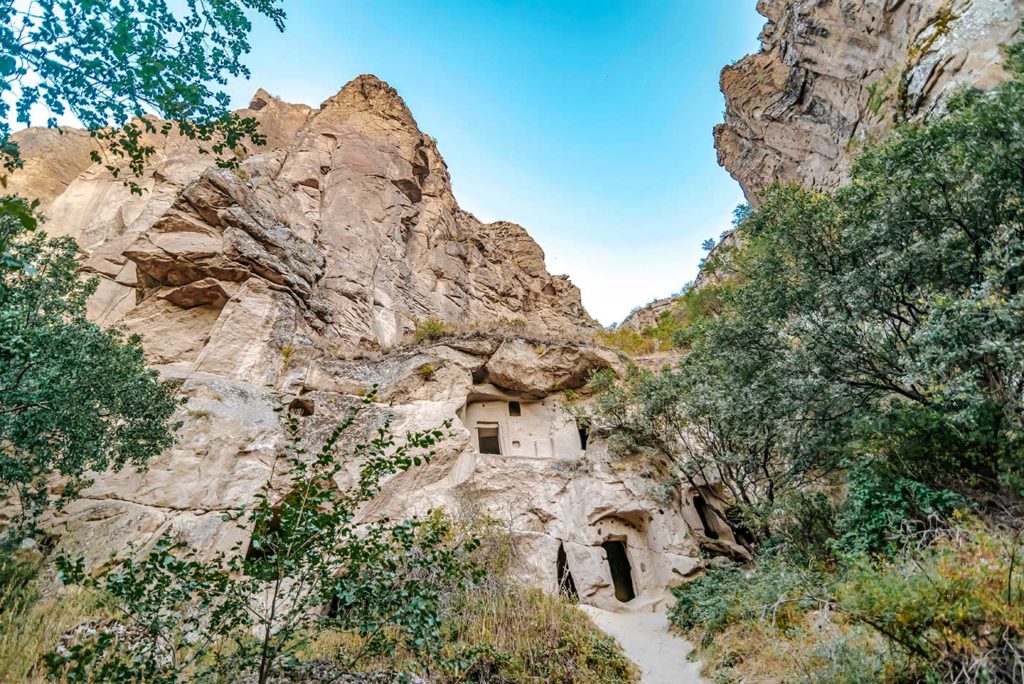
- Ihlara Valley
The Ihlara Valley is a canyon with a depth of approximately 100m was formed by the Melendiz River thousands of years ago. It starts at Ihlara village and ends after 14 kilometres with the Selime Monastery at Selime village.
- Selime Monastery
Selime Monastery is the biggest monastery in Cappadocia, with a cathedral-size church.
It took over 200 years to fully construct this enormous structure, which dates back to the 8th or 9th century.

- Derinkuyu, Kaymaklı, Mazi, and Gaziemir underground cities
Underground cities were built to be protected from external dangers so they are very small and hard to enter, but have innovative natural ventilation systems inside the buildings. These underground cities are thought to have been built during the Hittite and early Christian periods. However some other discoveries seem to indicate that these buildings were built by the Agartha and Shambhala civilizations. In the underground cities of Cappadocia, it is understood that the corridors of the underground cities were protected by gigantic keystones. In the face of enemy danger, the keystone was pushed towards the door, closing the entrance. The keystone can only be opened from the inside. The Greek historian-soldier Xenephon, in his book “Anabasis” tells how the Hellenes under the command of the Persian King Kiros also stayed in these underground cities for protection.
Gomeda Valley starts around 5km off the Ürgüp Mustafapaşa road. At the beginning of the valley, the first thing you see is the Gomeda ruins. Even though it does not contain many chimney rocks, it is a mysterious valley that has natural beauties, tunnels and dark caves.

- Gomeda Valley
Gomeda Valley starts around 5km off the Ürgüp Mustafapaşa road. At the beginning of the valley, the first thing you see is the Gomeda ruins. Even though it does not contain many chimney rocks, it is a mysterious valley that has natural beauties, tunnels and dark caves.
- Pancarlık Valley
One of the most underrated valleys in the region, Pancarlık is a beautiful spot. Not only is the scenery spectacular, with undulating ridges of pink rock and dollops of meringue-like white rock, but there are three rock-cut churches to visit here too.
- Temenni Hill (Wish Hill)
One of the gems of Cappadocia, Wish Hill is over 1,140m above sea level, and in ancient times was considered a holy place due to its proximity to God.
- Sobesos Ancient city
An archaeological excavation site with the remains of a Roman Bathhouse with an impressive and intact underfloor heating structure, and a covered walkway leading visitors around a series of intricate mosaics.
- Keşlik Monastery
Close to the old village of Mustafapasa, Keslik Monastery was in use from the 7th to the 13th century, and offers an incredibly calm atmosphere around 14 man-made churches, living quarters, and a hermit’s cave.
- Art & History Museum
An excellent, alternative museum housed in one of the man-made buildings carved out of the mountainside near Ürgüp.
Hiking in Cappadocia
Cappadocia’s unique landscape and remarkable scenery, filled with deep valleys and towering cliffs, make it a wonderful destination for hiking. The combination of spectacular natural beauty and rich heritage makes it a truly wonderful outdoor destination
Cappadocia has a truly unique outdoor destination in itself with peculiar natural valleys and great hiking routes coupled with an extraordinary heritage.
- Kızılçukur (Rose Valley) and Red Valley
Kızılçukur (Rose Valley) and the Red Valley are two huge, parallel valleys that run perpendicular to the Meskendir Valley that runs between Çavuşin village and Ortahisar. Their names come from the crimson rock formations that are dotted throughout both valleys. This region boasts some of the most beautiful panoramas and exciting walking trails in Cappadocia. The colourful fairy chimneys of these valleys contrast spectacularly with the bleak rock formations, all forming a wonderful backdrop to the unforgettable crimson sunsets.
- Meskendir Valley
Meskendir Valley offers a truly unique trekking trail past fairy chimneys, through passages and tunnels, and with the opportunity to see rock churches and wildlife along the way. As well as the rock pigeon lofts unique to Cappadocia, the valley is filled with butterflies. The Meskendir Church on the right hand side of the valley is one of the must-see churches in the region.
Cappadox Festival
I had wanted to see the stunning natural beauty and magical, mysterious fairy chimneys of Cappadocia for years. I decided to take advantage of a wonderful coincidence, and combine two excellent experiences into one holiday by heading to the Cappadox Festival back in 2016.
Cappadox Festival is a seriously exciting prospect. 3 days of alternative experiences including music, gastronomy, modern art, yoga, and mindfulness, all set against the spectacular backdrop of Cappadocia’s fairy chimneys. It is an eye-opening experience that strongly connects you to nature, and allows you to reset and find yourself. Sharing the sounds of musicians with the first light of the day, tasting traditional local food alongside master chefs from Turkey and around the world, drinking coffee in hidden caverns, and hiking the stunning landscape, this is a once-in-a-lifetime festival experience. The Cappadox experience takes over every one of your senses, and will change the way you look at the world.
The year I went was only the second year the festival had been running. It took place over the late May Bank Holiday, which is right in the middle of one of the best times of the year to visit Cappadocia.
However even in May, weather conditions change rapidly in the region. If you are planning to visit yourself, it is well worth being prepared for heat, cold, wind, and rain, with sturdy walking boots thrown in for good measure.
The theme for Cappadox in 2016 was ‘Let Us Cultivate Our Garden”, and looked at Cappadocia as a collective heritage, planting ‘seeds’ in the form of art, culture, and experiential activities. The rhythm of nature, humanity, and local traditions were front and centre, acting as an antidote to haste, growth, and globalism.
The festival experience is spread out across a wide area between Uchisar and Goreme. I landed at Nevsehir Airport, and took a bus to the cave hotelwhere I was staying, called Aşk-ı Derun. This was a great place to stay, although I would also love to try Argos in Cappadocia, which is supposedly the best place to stay in the region. Sadly there were no rooms available this time, which just means that I will have to visit again!
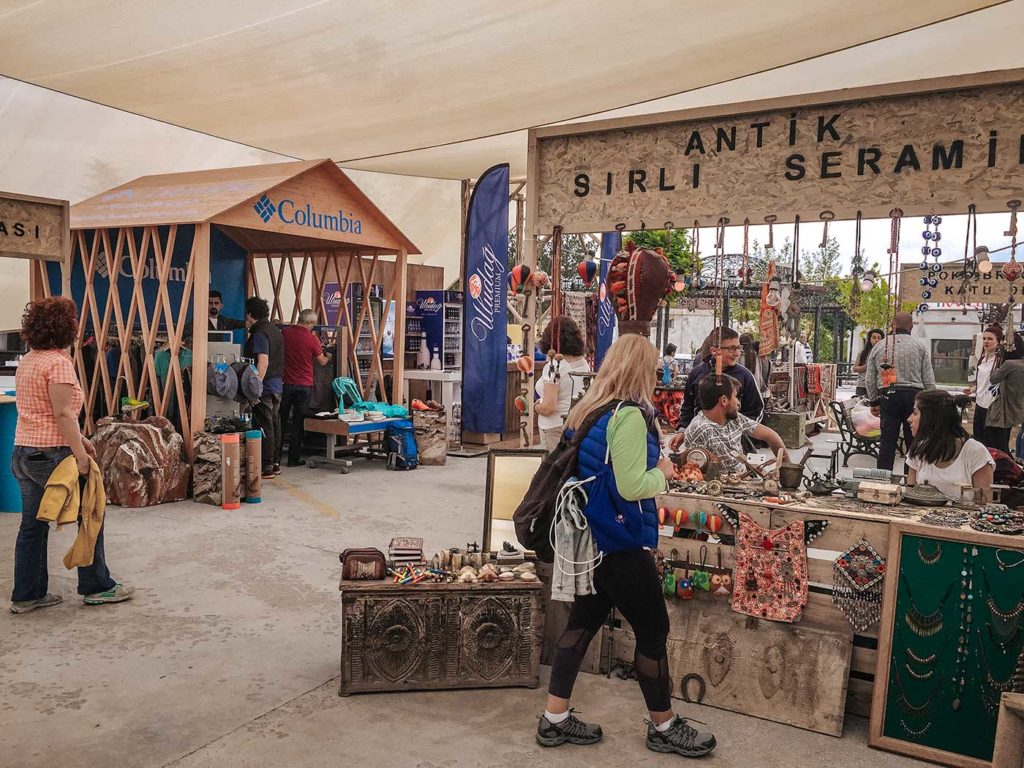
The festival has an extraordinary array of activities, with something happening every half an hour from 7am to 11pm every day for three days, and something on offer for everyone. I struggle with early mornings (you would never describe me as an early bird!) so unfortunately I missed the chance to do yoga classes with the sunrise, but I did wake up early enough to join the Nature Walk in Love Valley. By pure coincidence, when I went to sign up for the event I met my ex-colleague Ali, along with his wife, cousin, and two other friends, and we all walked together. Love Valley is an amazing sight (see above), and includes canyons, vineyards, orchards, and gigantic fairy chimneys. After the long hike I was starving, so when we returned to the festival I joined the Local Food Workshop. Here I had the chance to taste some of the traditional local delicacies of the area, before heading back to Üçhisar Square to explore the marketplace, and attend stone carving, ceramics, basket weaving, jewellery, and marbling workshops. I followed up this packed itinerary with another nature walk, this time to Pigeon Valley.
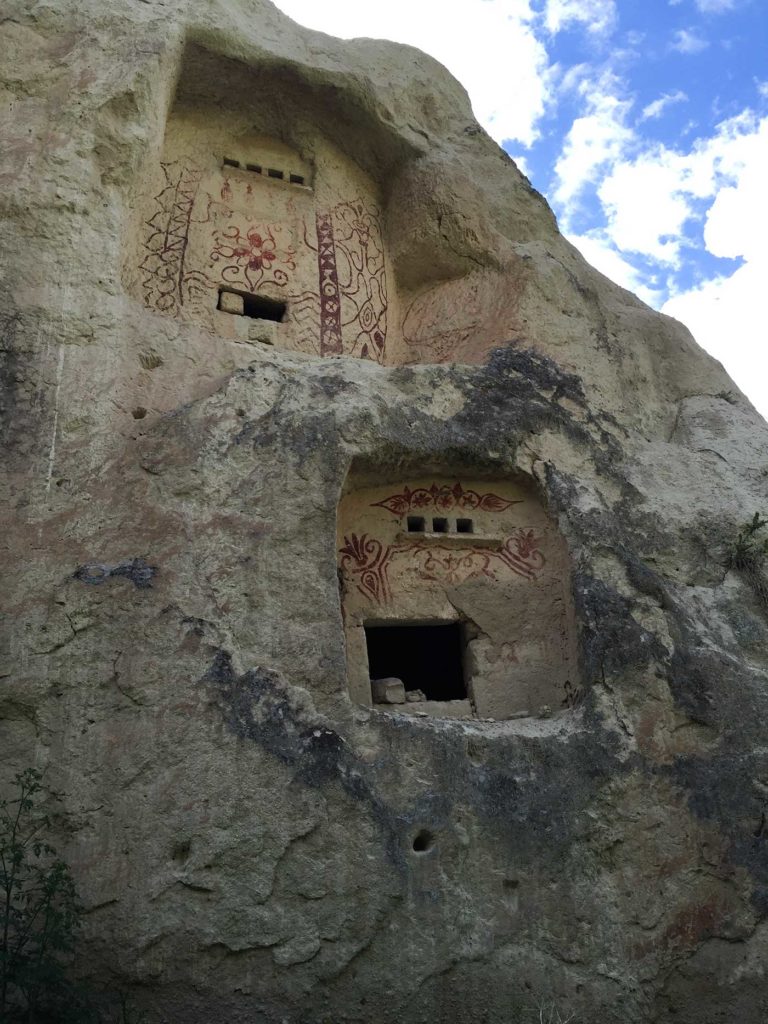
As the evening drew in I decided to try one of Cappadocia’s famous Pottery Kebabsfor dinner, and met Ali’s group for a drink, before heading to the concert area in the shadow of Üçhisar Castle to listen to Karsu. I had never heard of her before, but I was swept away. After the concert we tasted some wine from the Kocabağ winery, and admired the scenery.
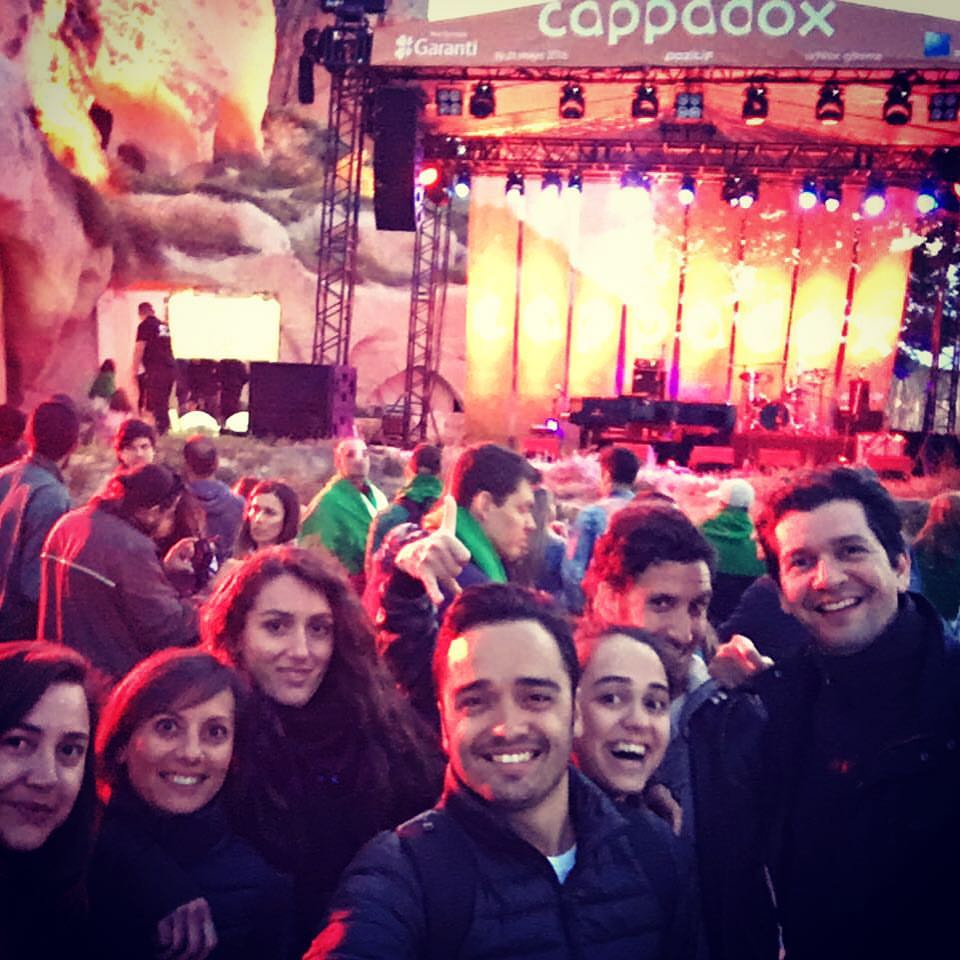
Day 2 started with the Flora Walk in Gomeda Valley. We hiked this beautiful valley, and learned about the dense flora and local plants from Murat Taşçıoğlu. Much of the flora here is believed to have healing powers! After several hours of walking it was a blessed relief to attend the Picnic event, and relax with a BBQ and a beer, as well as trying some more local, seasonal dishes made with fresh ingredients and listening to music. Fully refreshed, I took another walk along Bozdağ Valley. The hiking events at Cappadox are brilliantly organised, with plenty of stops along the way, as well as snacks and refreshments, and even the occasional stop to listen to music! Bozdağ Valley is where I first discovered the Uninvited Jazz Band, now one of my favourite musical groups.

I started my second evening listening to Şirin Pancaroğlu at Bezirhane. The cosy atmosphere of the venue combined perfectly with the mythological ambiance of this wonderful harp music, and was a real treat. After this lovely start, I met up with Ali’s group again, and we headed to the Perili Ozanlar Valley, the festival’s main stage, to listen to the Erik Truffaz Quartet and Ilhan Erşahin & Ocean vs Orientalis. I probably should have left early, as the next day was due to be an early start, but I was having too much fun!
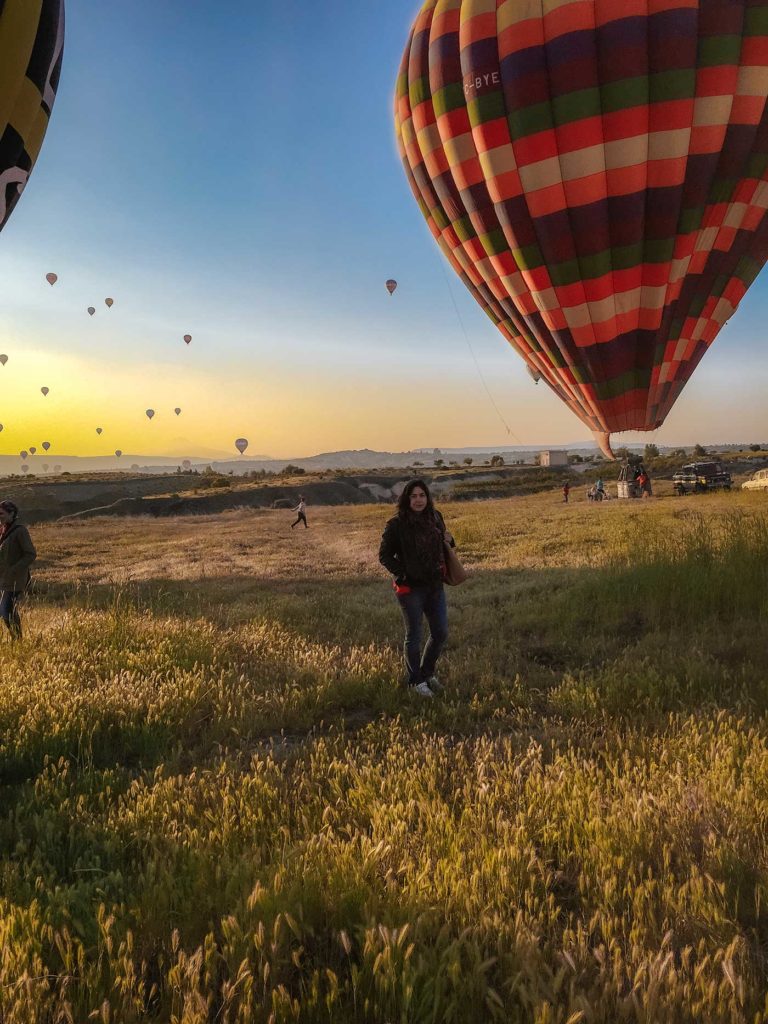
The next morning started with a hot air balloon ride…at sunrise! This meant a 5am start (so waking up some time before to get there in time) which was almost impossible for me, but I found strength from somewhere to achieve this amazing experience. Seeing those spectacular landscapes from the air, including the Erciyes Mountain, with the sun rising behind the astonishing rock formations, was something that I will never forget.
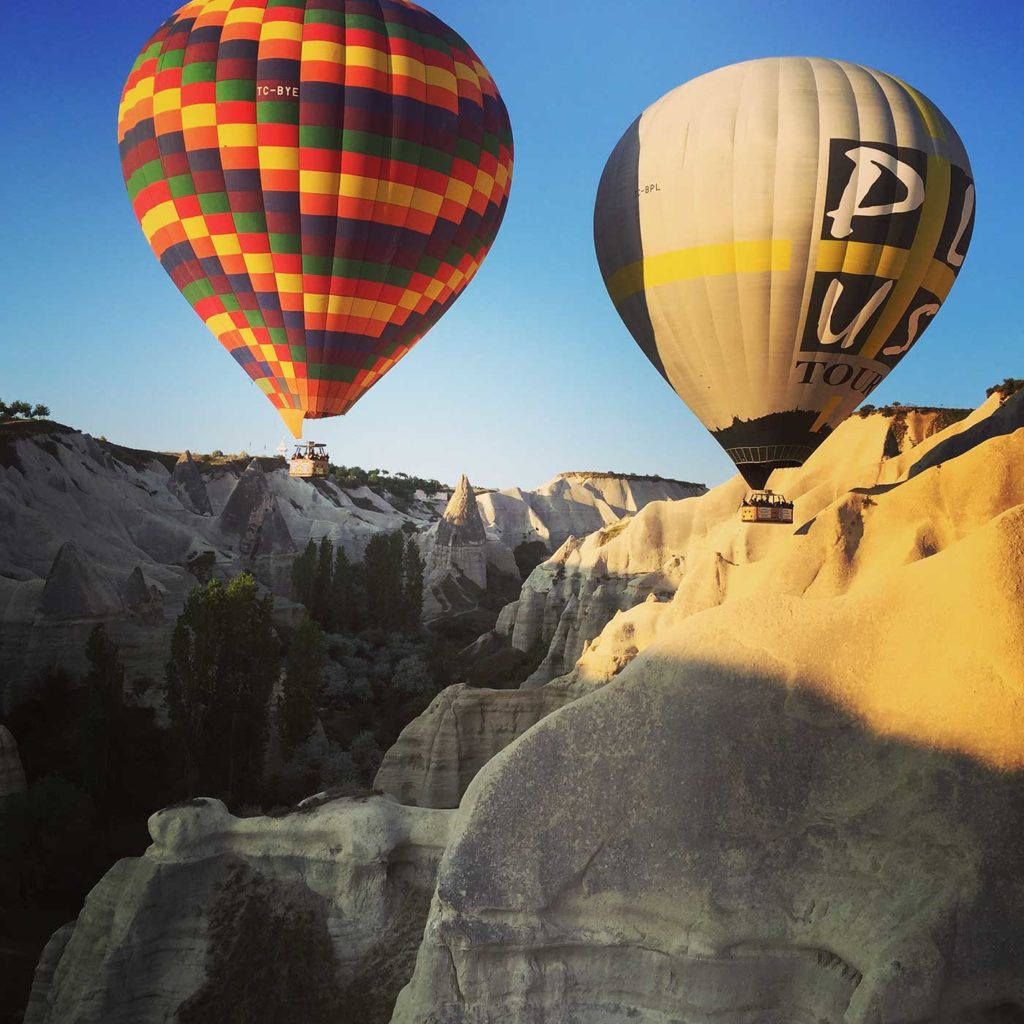
Following this early but amazing start, I went for a cycle ride in the Avanos Valley, then headed to a Gourmet Tasting event to try local wines, fruit, ‘jug cheese’ from Anatolia, dry cream, stuffed vine leaves, and air-dried pastrami. Fortified, I stopped in Bezirhane to listen to Kaki King, before heading for more food at the Chef’s Table. This event was an alternative exploration and reimagination of Cappadocian cuisine, including several dishes and traditions that no longer exist in mainstream cooking. The chefs refined, diversified, and renewed some of the richest flavours of Cappadocia’s cuisine, blending influences from ancient civilizations with cooking practices popular today.

For my third and final evening, I went to the Full Moon Special in the Red Valley, an open-air harp and cello concert from Rebecca Foon and Şirin Pancaroğlu, illuminated by the full moon. Following this magical experience, I returned to the main stage for the final day party. A fitting end to a truly extraordinary experience.
